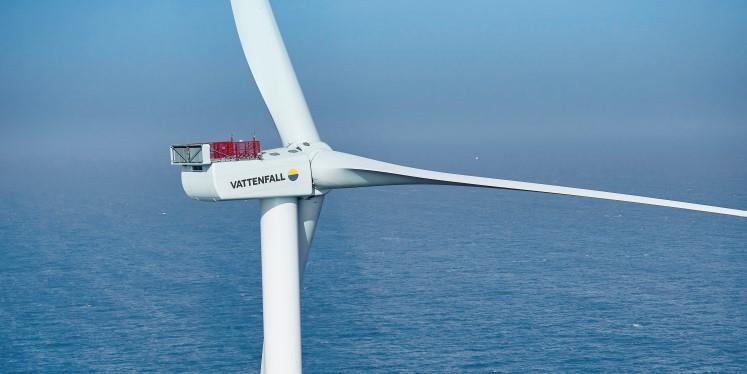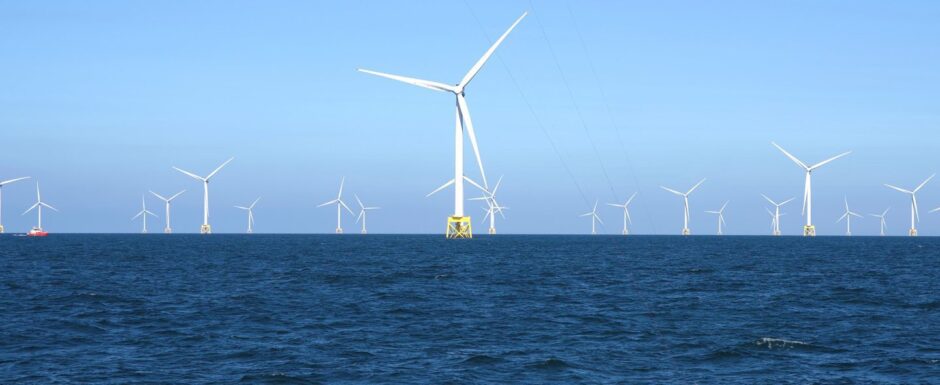
Analysts have warned that the UK could only contract 5GW of offshore wind capacity in its sixth allocation round (AR6) for the Contracts for Difference (CfD) scheme, which closes today.
Associate at Aurora Energy Research Pranav Menon told Energy Voice: “This would require AR7 to procure 19GW to deliver 50GW of offshore wind by 2030, which puts this aspiration increasingly out of reach. Aurora’s view is that 33GW of offshore wind capacity is deliverable by 2030,” he said.
“The conservative reference price of £24.13/MWh is the key barrier limiting capacity contracted as it increases the budgetary impact of every MW procured,” he added.
“A 45% increase in the reference price could double the capacity contracted at administrative strike price.”
In addition, of the 5GW that can be potentially obtained, 1.4GW of this is likely to be recycled from assets that had previously secured CfD contracts in past auction rounds and are currently rebidding.
This will only allow for 3GW of capacity from new builds, according to Menon.
Offshore wind ambitions
The achievability of AR6’s long-term offshore wind ambitions have been put into question due to a lacklustre performance of the previous AR5 in 2023. Offshore wind developers made zero bids due to a low maximum price per MW for generating electricity (administrative strike price), significantly limiting returns.
Although AR6’s budget of £800 million for offshore wind projects alone is impressive compared to AR5’s total budget of £225m, concerns have been raised as to whether this will be enough to allow the projects to deliver enough power for the UK to meet its 2030 wind target.
The current £800mn budget for AR6 would be unable to provide for this, with Menon remarking that the UK had “procured 26GW of offshore wind capacity for delivery by 2027/28, requiring an additional 24GW to be procured in the next two auction rounds (AR6 and AR7).”
He noted that procuring half the required capacity at 12GW alone would require “a budget of close to £3bn. At a strike price of £55/MWh (25% discount to ASP), procuring 12GW would require a budget of £1.9bn earmarked for offshore wind.”
Despite the need for budgetary increase to reach targets, the UK is unlikely to see the government engage due to the country’s approach towards general election, with Menon noting that a raise in budget may incur significant effects on consumer bills.
Missed opportunity
Overall, the CfD scheme has been largely successful, delivering significant growth to the UK’s energy sector – facilitating investments in 29.4GW of nuclear and renewable energy generation since its introduction in 2014, with 6.4GW currently operational.
The initiative has been particularly successful for offshore wind in the UK– having secured 20GW from the sector since 2014 – while additionally lowering prices by around 70%, according to comments made by Conservative MP Graham Stuart.
With £800mn allocated for offshore wind in AR6’s budget in Pot 3, other technologies have received significantly less – including established technologies such as solar and onshore wind (£120mn for Pot 1), and emerging technologies, such as floating offshore wind and geothermal (£105mn for Pot 2).
Commenting on the government’s announcement for the AR6 budget, RenewableUK CEO Dan McGrail said he welcomed the higher budget, noting it would “secure a significant amount of new offshore wind capacity and private investment, as well as creating thousands of new jobs.”
Despite acknowledging the project’s positive prospects, McGrail added that the Treasury had missed the opportunity to maximise the capacity of UK offshore wind farms, highlighting that RenewableUK had more than 10GW of capacity up for bidding.
“Building this is essential if we are to make up lost ground from last year’s auction and create the substantial pipeline required to accelerate supply chain investment and growth in the UK. This funding will only secure between 3 and 5GW,” he concluded.
Challenges
The UK’s wind industry is currently facing the dual challenges of high costs and grid connectivity issues. Costs for the construction and operation of fixed and floating offshore wind assets have risen significantly, in part due to tight supply chains and super-size turbines, which has left port infrastructure struggling to cope.
Menon highlighted the role inflation had played, saying: “The CAPEX for fixed and floating offshore wind projects has increased by over 20% year on year, primarily due to increased turbine costs driven by manufacturers seeking to recover margins.”
Regarding large turbine sizes, he also acknowledged that manufacturers had begun to move away from the practice, instead moving towards standardising sizes and models in an effort to reduce pressure on offshore supply chains.
Alongside turbines themselves, strained grid connection queues have also played an important role in affecting wait times and long-term implementation in offshore wind projects, with the UK’s constrained transmission network leaving offshore projects with a wait time of more than 10 years at some locations in order to secure a grid connection on land.
Efforts have been made to streamline the process and fix grid issues however, with Ofgem’s Accelerated Strategic Transmission Investment (ASTI) framework set to funnel investment into important network infrastructure.
The National Grid’s ‘First-ready, First-connected’ approach to grid queue management are also solid steps towards fixing the issue. Despite this, Menon said that “generators expect to face lengthy wait times until the delivery of key network infrastructure upgrades, which are expected by the end of the decade”.
Potential bidders
Multiple companies are expected to be involved in the bidding process for AR6, with Iberdrola announcing in February that its UK arm ScottishPower Renewables has been preparing the East Anglia One North and East Anglia Two offshore wind projects for the round.
The projects received development consent in March 2022, producing 800MW and 900MW respectively, and will be built 30km off the coast of Suffolk.
Menon mentioned that companies including Orsted and Ocean Winds were also likely to participate, due to owning planning and grid connection ready sites that are eligible for participation in AR6.
RWE’s purchase of the Norfolk Offshore Wind Zone from Vattenfall for £963m in March means it may also be involved, with Vattenfall Director of UK Media Relations Tim Dunford telling Energy Voice that the company had “sold its consented UK offshore wind projects (the Norfolk Offshore Wind Zone) – which would have been eligible for AR6” in March.
ScottishPower, Orsted, RWE and OceanWinds did not respond to requests for comment from Energy Voice.
Continued interest from investors is vital in maintaining the momentum of the offshore wind sector, and this can be helped with policy support from the government, with reduction in policy uncertainty a key factor in increasing offshore wind projects in the UK.
Designs of renewable subsidy schemes in future and uncertainties around a move towards zonal pricing have both increased risk premiums for prospective projects and has made attracting investors to the sector difficult.
The UK government will need to look at an overhaul on its approach to policymaking if it is to expect significant growth in offshore wind and sustainable energy production.
The round, which opened on 27th of March, will have its results published this summer.
 © Supplied by Renewable UK
© Supplied by Renewable UK © Supplied by ScottishPower Renewa
© Supplied by ScottishPower Renewa